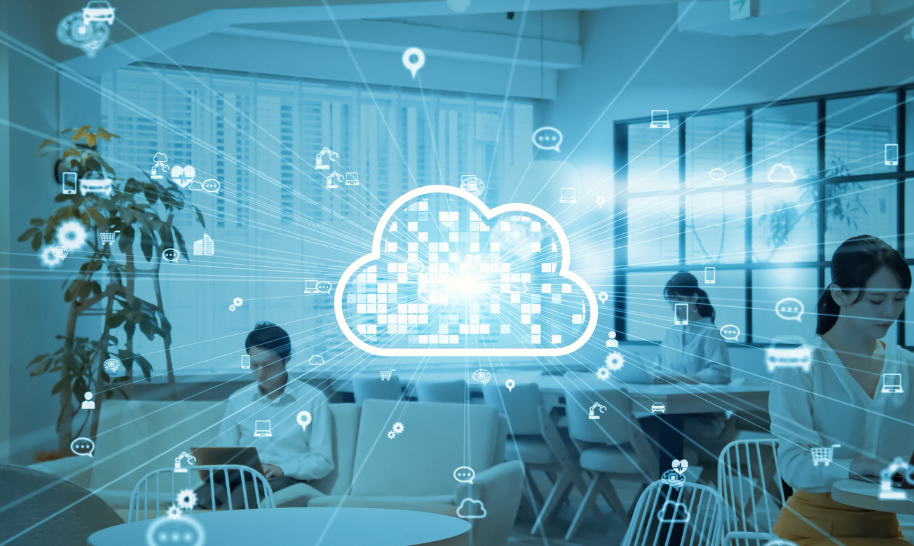In 2025, the expectations from data visualization are no longer limited to “nice-to-have dashboards.” Decision-makers are not looking for tools that just report; they need systems that explain, guide, and prompt action. And while most BI teams are still tweaking charts and filters, the business environment has already moved on.
What’s changing is the role that visualization plays within the enterprise. It's no longer the final layer of a reporting workflow. It has become the interface between fast-moving data and real-world decisions, whether that’s a CFO deciding on budget reallocations mid-quarter, or a product manager interpreting behavioral shifts across segments.
Yet many organizations are still treating data visualization like a cosmetic upgrade: make it more interactive, make it prettier, plug in some AI-generated headlines. That mindset misses the point. Visualization is becoming a core business function, a strategic layer that sits between raw data and human intuition.
Today, we are moving toward visual systems that anticipate needs, understand context, and can tell different stories to different stakeholders, all without needing a data scientist in the loop. That shift is being driven by three forces:
-
An explosion of real-time and multi-modal data (from apps, devices, and simulations)
-
AI’s growing role in surfacing insights instead of users having to dig for them
-
The changing expectations of users who don’t want to explore dashboards, but want answers now
For enterprise teams, this is both a challenge and an opportunity. It is a challenge because legacy reporting stacks cannot handle what’s coming. But it is also an opportunity to rethink how information is delivered, consumed, and acted upon across departments.
This blog unpacks the top emerging trends shaping data visualization in 2025 and beyond. These shifts are already reshaping how companies communicate internally, respond to customers, and prioritize initiatives.
Why Data Visualization Needs a Rethink in 2025
Data visualization needs to catch up to how businesses actually work.
When dashboards first became mainstream, they were designed for static reporting, occasional business reviews, and analyst-led exploration. Today, none of that is enough. Businesses now operate in environments where decisions are made continuously, not quarterly. Stakeholders expect timely, context-rich insights, even as the data they rely on comes from an increasingly fragmented mix of SaaS platforms, IoT networks, AI models, and behavioral systems.
Data Is Growing Faster Than Decision-Making Can Keep Up
The pace at which data is growing continues to outstrip most organizations’ ability to interpret it. According to a report by Statista, global data creation is expected to reach over 394 zettabytes by 2028, nearly tripling from current levels. And yet, only a small fraction of this is actively analyzed or visualized in a way that influences business outcomes.
While data is more accessible than ever, what many teams still lack is a clear path from information to insight.
From Dashboards to Decisions: The Shift to Proactive Storytelling
Traditional dashboards display metrics. But they rarely explain why something is happening or what to do next. That gap is forcing a shift from reactive reporting to proactive storytelling.
Instead of exploring visualizations, users want curated narratives. As Gartner had predicted years ago that by 2025, 75% of data stories would be automatically generated using augmented intelligence and machine learning, rather than manually crafted by analysts.
Visual design matters, but what teams really need is clarity that supports faster thinking. Metrics alone aren’t useful unless they lead directly to decisions.
|
See how we helped Block & Tam simplify data storytelling with an AI solution that turns plain English prompts into instant, decision-ready visualizations. Read the full case study. |
Visual Literacy Is No Longer Optional
As business users take on more data tasks, visualization tools must evolve beyond specialist audiences. The concept of “visual literacy,” which is the ability to read, question, and interact with data visuals, is becoming a necessary skill across functions, not just for analysts.
Visualization now needs to deliver clarity for non-technical users such as product managers, marketers, and finance leaders as well as BI teams.
Multi-Dimensional Data Needs Multi-Layered Visuals
Decision-making today is rarely linear. Businesses are analyzing customer behavior alongside real-time operational data, predictive models, and market scenarios, all at once.
One-dimensional charts and isolated dashboards cannot handle this level of complexity. Modern visualization must accommodate multi-dimensional, contextual, and role-specific views, often layered dynamically based on what the user is trying to solve.
In short, businesses don’t need more data visuals. They need smarter ones.
Next up, we’ll dive into the trends that are actually solving these problems, from AI-generated visual narratives to immersive analytics environments.
Top Emerging Data Visualization Trends Shaping 2025 and Beyond
Over the next two years, visualization will stop being a passive reflection of what happened and start becoming an active part of how decisions are made. The trends emerging in 2025 represent a redefinition of what data visualization is for. Instead of manually building dashboards and waiting for users to interpret patterns, we are moving toward systems that anticipate questions, adapt to context, and deliver business-ready narratives without additional overhead.
What follows are the most impactful trends shaping the future of data
visualization, each one grounded in business needs, not just feature sets.
-
AI-Powered Data Storytelling – Visuals that explain insights automatically using natural language.
-
Immersive Analytics with AR/VR – Users can interact with data in 3D environments for deeper insight.
-
Real-Time and Streaming Dashboards – Continuous updates from live data sources like IoT and finance systems.
-
IoT-Integrated Visualization – Visual tools designed for sensor, device, and geospatial data.
-
Ethical and Transparent Visuals – Visualizations that reduce bias and highlight data context accurately.
-
Neuro-Inspired Dashboard Design – Interfaces built around cognitive science to reduce decision friction.
-
Quantum and Biometric Visualization – Tools that handle probabilistic, sensory, and human-generated data.
-
ESG and Sustainability Dashboards – Visuals that track emissions, diversity, sourcing, and compliance metrics.
# AI-Powered Data Storytelling
AI is no longer just powering backend analytics. It is reshaping how stories get told on the front end. Instead of waiting for users to interpret visuals, platforms are now starting to explain insights automatically.
AI-powered data storytelling refers to systems that generate plain-language summaries, suggest optimal visual formats based on context, and surface patterns that users didn’t explicitly ask for.
Why This Matters Now
The average stakeholder doesn’t want to “explore data.” They want a clear takeaway. AI bridges the gap between complex analysis and actionable insights by turning raw numbers into narratives. Most enterprise leaders now consider “narrative automation” a key requirement for their next BI investment.
This is especially important as companies look to democratize data. When product managers, marketers, or finance leads can instantly understand the why behind a metric, without parsing through filters or breakdowns, teams move faster.
What It Looks Like
-
Platforms like Power BI, ThoughtSpot, and Tableau Pulse are already embedding natural language generation into dashboards, automatically summarizing trends and anomalies.
-
Tools like SageNarrate and integrated features from Tableau (which acquired Narrative Science) can build full executive reports based on live dashboards; no analyst required.
-
Some systems even tailor insights to user roles, showing marketing attribution summaries to CMOs and churn patterns to product leads from the same data source.
Watch For
-
Over-simplification: AI can misrepresent nuance if it is trained on generic assumptions or biased datasets.
-
Trust barriers: Users may still prefer seeing the logic behind the conclusion. Transparency into how the AI arrived at its takeaway will matter.
-
Dependency risks: As more teams rely on auto-narratives, companies must balance speed with critical thinking.
|
Explore how AI is revolutionizing data storytelling in our blog on AI in Data Visualization: From Data to Actionable Insights. |
# Immersive Data Experiences with AR/VR
Until recently, interacting with data meant clicking filters, expanding graphs, or downloading PDFs. But visualization is no longer confined to 2D dashboards on flat screens. Thanks to AR, VR, and sensory-enhanced interfaces, a new generation of experiences is emerging, the ones that allow users to step inside their data, rather than simply viewing it.
In industries where spatial reasoning, scale, and context matter, like logistics, healthcare, aviation, and advanced manufacturing, the ability to explore data in immersive environments is transforming how decisions get made.
Why Immersive Visualization Is Gaining Ground
The case for AR/VR data interaction is rooted in cognitive science. When users can physically navigate through time-series data, walk around a simulation, or interact with multi-layered models, comprehension becomes more intuitive.
What This Looks Like in Practice
-
Smart factories are layering real-time sensor data over physical equipment using AR headsets, enabling supervisors to visualize performance metrics in situ, without leaving the floor.
-
In healthcare, immersive analytics are being used to explore patient-level data in 3D anatomical contexts, helping doctors assess risk factors with far greater clarity.
-
Supply chain operators are using VR-driven dashboards to simulate logistics flows, capacity stress, and cost scenarios, which is especially helpful for global rerouting decisions.
This trend is often paired with multimodal visualization, which is the combination of visuals with auditory cues, haptics, or motion triggers. For example, an anomaly in a critical system might trigger a subtle vibration or audio alert when viewed through an AR interface, reinforcing pattern recognition without cognitive overload.
Immersive analytics won’t replace dashboards tomorrow. But in sectors where real-time insight, physical context, or simulation is vital, this trend signals a clear move away from flat visualizations toward interactive, embodied intelligence.
|
Get the complete perspective on AI-driven visuals in our eBook: AI in Data Visualization |
# The Rise of Real-Time and Streaming Data Visuals
Most dashboards are backward-looking by design. They report what happened yesterday, last week, or last quarter. But in environments where conditions change by the minute, like e-commerce pricing, fleet logistics, fraud detection, or IoT-powered systems, that delay renders insights obsolete.
That’s where real-time and streaming data visualization enters. Instead of serving as historical summaries, visual systems are evolving into live control rooms, constantly updating, recalibrating, and supporting decisions as events unfold.
When Every Second Counts
Industries like financial services, manufacturing, and healthcare increasingly rely on up-to-the-moment visibility. In fact, organizations that act on real-time data are more likely to make faster decisions than their peers.
The challenge is not generating this data; it is visualizing it in ways that support immediate, confident action.
|
Learn how our Real-Time Data Analytics Services can empower your business with instant insights. |
From Static Views to Live Canvases
Modern platforms are addressing this by shifting from static charts to streaming interfaces. These visualizations continuously refresh with minimal latency, often pulling from hybrid architectures such as cloud warehouses, event hubs, or edge processors.
Some key enablers include:
-
Apache Kafka, Amazon Kinesis, and Azure Event Hubs for high-throughput data streaming
-
Grafana, Redpanda, and Metabase for real-time dashboarding
-
BI platforms like ThoughtSpot and Looker that now support live connections to streaming data pipelines
These tools enable decision-makers to monitor key metrics as they evolve, not after the fact. For example:
-
A retail operations team can monitor live in-store footfall and inventory turnover
-
A fintech risk team can visualize suspicious transaction patterns as they emerge
-
A transportation company can display vehicle diagnostics, route delays, and compliance flags on a single live map
Real-time visualization matters because business decisions are happening faster than ever. And in many sectors, that pace is only accelerating.
# Visualizing the Internet of Everything: Integration with IoT
By 2025, nearly everything with an on/off switch is generating data. Industrial machinery, wearable tech, smart meters, connected vehicles, medical devices, all streaming metrics, logs, and signals 24/7. Data is more accessible than ever, but the volume and complexity have become harder to manage.
As IoT continues to scale, visualization becomes one of the few ways humans can make sense of the chaos. But unlike traditional BI data, IoT information is messy, rapid, and spatial, which means visualization must evolve to handle new formats, new volumes, and entirely new expectations.
When Data Comes from Every Direction
According to Statista, the number of connected IoT devices worldwide is expected to reach over 29 billion by 2030, up from 20.1 billion this year. Each of these devices can produce hundreds of data points per minute, often across geographies and environments.
This data doesn’t come from traditional warehouses. It is generated in real time, often unstructured, tied to physical locations, and used for operational visibility rather than historical reporting.
For example:
-
A logistics fleet generates live data on temperature, route efficiency, and vehicle diagnostics
-
A factory floor streams sensor readings across hundreds of machines
-
Smart cities collect foot traffic, energy consumption, and environmental metrics around the clock
Traditional dashboards often fall short as they lack the structure, speed, and context needed to handle today’s data environments.
Why IoT Data Is Hard to Visualize
Visualizing IoT data comes with its own set of challenges. The volume and speed of incoming data streams require constant updates, often in real time. At the same time, the level of granularity is extremely high, especially when organizations are dealing with millions of data points across individual devices, systems, and entire fleets.
Much of this data is also geospatial, meaning it's tied to specific coordinates, movement patterns, or physical infrastructure. On top of that, IoT systems often produce event-based patterns like sudden spikes, anomalies, or cascading failures that don’t show up clearly when averaged out. These complexities call for more than traditional charts. Instead, they require interactive maps, real-time stream processors, anomaly heatmaps, and layered time-series visualizations designed for high-frequency, location-aware data.
Evolving Techniques for IoT Visualization
-
Geospatial dashboards using platforms like Grafana or Mapbox to visualize location-aware device data in real time
-
Anomaly detection visuals that highlight deviations rather than just trends, which is critical for maintenance and alerts
-
Hierarchical drill-downs from fleet to device to component-level telemetry
-
Edge-aware dashboards that run locally when cloud latency isn’t fast enough
Enterprises are also investing in event-based architecture for visualization, displaying only the meaningful changes, not every datapoint. This reduces noise while keeping teams focused on what matters.
IoT isn’t just expanding data. It’s changing its shape, speed, and scale. Visualization tools that were built for structured, centralized systems must now adapt to dynamic, distributed environments. And those who can interpret these new data forms clearly and quickly will have a major operational advantage.
# Ethical and Transparent Data Visualization: Why Transparency Is Non-Negotiable
Visualizations are powerful. That’s precisely why they are dangerous when done carelessly or, worse, manipulatively.
As data becomes a central part of how businesses communicate with customers, employees, regulators, and investors, there is growing scrutiny not just on what the data says, but how it is being presented. Poor design choices, cherry-picked ranges, or misleading chart types can distort reality and erode trust faster than any faulty dataset could.
The Cost of Misleading Visuals
Whether intentional or not, data misrepresentation has real consequences. A study by the Visualization Design Lab at the University of Utah found that 84% of COVID-19-related data visualizations offering interpretations were misleading, often due to unsupported claims or flawed reasoning rather than outright falsehoods.
In regulated industries like healthcare, finance, or climate reporting, the impact can be even more severe, ranging from compliance violations and legal penalties to reputational damage.
|
For a broader view of where modern data practices are headed, see our insights on Data Engineering: Key Trends to Watch. |
What Ethical Visualization Actually Looks Like
Ethical visualization is showing the right data in a way that accurately reflects reality. That includes:
-
Honest baselines: Avoiding truncated Y-axes that exaggerate trends
-
Clear source attribution: Especially when pulling third-party or model-driven data
-
Visual consistency: Ensuring comparisons across charts don’t use misleading color scales or geometry
-
Context framing: Highlighting caveats, limitations, or uncertainty ranges
Transparency isn’t just about avoiding deception. It’s about enabling better judgment. A dashboard that shows a declining trend without noting seasonality or model assumptions can be just as harmful as one that’s intentionally biased.
How Teams Can Bake Ethics Into Their Design Process
-
Use internal design audits for dashboards that influence decisions or public reporting.
-
Label data sources and update frequencies directly within visual interfaces.
-
Train non-design stakeholders (like PMs, sales ops, or marketers) to spot red flags in charts they create or consume.
-
Avoid novelty for novelty’s sake; just because a spiral chart looks cool doesn’t mean it’s clear.
In a business environment where every stakeholder is inundated with numbers, credibility becomes a differentiator. When your visualizations tell the truth plainly, your insights land faster, your decisions are stronger, and your teams spend less time second-guessing the data.
# Neuro-Inspired and Cognitive Design Principles: Visuals That Think Like Humans
Not all visualizations are created equal. Two dashboards might show the same data, but only one leads to faster, clearer decision-making. The difference often comes down to design that aligns with how the human brain processes information.
This is the idea behind cognitive and neuro-inspired visualization: building interfaces that speak the brain’s native language. Rather than adding more filters or visual flair, these systems prioritize comprehension, pattern recognition, and mental workload reduction.
Why This Approach Matters Now
As business users take on more responsibility for data interpretation, dashboards can no longer assume analytical literacy. The question is no longer “What do we show?” but “How do we show it so someone instantly gets it?”
A study by MIT neuroscientists reveals that the human brain can process visual scenes in as little as 13 milliseconds, but only if the visuals are designed for clarity, contrast, and simplicity. Poorly structured dashboards add friction, whereas well-structured ones reduce time-to-insight.
Principles Behind Cognitive Visualization
Some of the key neuro-inspired ideas influencing modern dashboard design include:
-
Pre-attentive attributes: Size, color, shape, and position help users detect patterns before conscious processing kicks in.
-
Chunking: Grouping related metrics or visuals to reduce cognitive overload.
-
Gestalt principles: Using visual proximity, similarity, and continuity to guide the user’s focus naturally.
-
Progressive disclosure: Revealing layers of detail only when needed, rather than showing everything at once.
Design choices directly shape how people understand data and what they do with it. When visuals are clear and intentional, insight follows faster.
Bringing It to Life in Enterprise Dashboards
-
Use consistent color coding to represent specific business concepts (e.g., red for churn, green for conversion).
-
Prioritize relative over absolute visuals, for example, bar lengths rather than exact percentages, when clarity matters more than precision.
-
Apply layout logic that mirrors how people scan: top-left to bottom-right in Western cultures.
-
Incorporate microcopy and iconography to reduce the need for training or explanations.
Enterprises investing in these design principles often see downstream benefits, including reduced onboarding time, fewer misinterpretations, and higher user adoption of BI tools. When visualization tools are built for how humans think, not just how databases store, they become decision accelerators.
# Quantum and Biometric Data Visualization: Making the Invisible Visible
As enterprises push the frontiers of computation and sensing, they are encountering data types that defy traditional formats. Quantum systems and biometric technologies are generating information at scales and structures never seen in legacy BI setups.
And with that comes a new challenge: how do you visualize data that behaves non-linearly, probabilistically, or is tied to the human body?
When Traditional Dashboards Don’t Apply
Quantum computing generates data not in binary bits, but in qubits, which can exist in multiple states simultaneously. While most of this visualization work is currently limited to research and simulation environments, it’s setting the foundation for how enterprises may interpret probabilistic or entangled data in the future.
Similarly, biometric data (e.g., facial recognition points, EEG signals, gait patterns, heart rate variability) is high-frequency, sensor-driven, and often personalized. It is dynamic and contextual, requiring time-aligned, pattern-recognition visual techniques rather than simple aggregates.
These datasets are:
-
High-volume and high-frequency
-
Multimodal (often combining audio, video, physiological signals)
-
Context-sensitive, meaning visualization depends heavily on use case and user
Where New Techniques Are Emerging
To accommodate these formats, researchers and advanced tech teams are experimenting with:
-
Multi-dimensional vector visualizations that map entangled relationships or state probabilities (common in quantum labs and simulations)
-
Signal density plots and waveform layering used in biometric health or neuroscience data
-
Dynamic heatmaps and motion trails for physical movement, gesture tracking, or real-time emotion mapping
Platforms like IBM’s Quantum Composer and biometric SDKs from Apple, NeuroSky, and MindMaze are already incorporating visualization modules designed for these unconventional data structures.
What This Means for Enterprise Readiness
While most companies are not directly working with quantum datasets yet, the adoption curve is accelerating. On the biometric front, adoption is already mainstream. From biometric authentication in employee portals to real-time patient monitoring in healthcare, organizations increasingly rely on live body-based signals to trigger actions or decisions.
Teams building the next generation of dashboards need to think beyond charts and KPIs. They’ll need visual models that can represent uncertainty, probability, and signal dynamics, all while preserving clarity for the end user.
These data types represent a fundamental shift in how information is structured and interpreted. Visualization, in turn, will need to become more flexible, more sensory-aware, and more attuned to complexity than ever before.
# Data Visualization for Sustainability and ESG Metrics
Sustainability is not just a line item in annual reports anymore. Today, it is a boardroom priority, an investor filter, and, increasingly, a regulatory obligation. As companies commit to net-zero targets, ethical sourcing, DEI benchmarks, and circular operations, the ability to track and show progress becomes a competitive necessity.
But ESG (Environmental, Social, and Governance) data is notoriously fragmented. Emissions reports, supplier audits, water usage logs, and HR demographics don’t live in the same systems, nor do they speak the same language. This is where advanced data visualization plays a critical role by turning abstract sustainability goals into operational, auditable, and understandable visuals for every stakeholder group.
What ESG Visualization Looks Like in Practice
-
Live emissions trackers, often integrated with IoT sensors, show energy usage and carbon footprint by facility or geography
-
Workforce diversity dashboards visualize hiring, retention, and pay equity across departments
-
Supplier risk maps highlight regions or vendors with low ESG scores, linked to sourcing decisions
-
Scenario models simulate sustainability investments, like switching to renewables or reducing waste streams
These tools are often embedded into investor relations platforms, board portals, and even public-facing ESG microsites.
The companies that treat ESG reporting as an afterthought will struggle to
meet stakeholder expectations. Those that treat it as a communication
opportunity, backed by reliable, clear, and interactive data, will not only
meet compliance but also build credibility in a way static reports never
can.
Also Read : Choosing a Data Engineering Partner: What Every Company Should Know
What These Trends Mean for Business Leaders
The trends shaping data visualization today reflect a deeper shift in how organizations think, operate, and execute decisions. For business leaders, the implications go far beyond dashboard aesthetics or BI platform comparisons.
What’s really at stake is decision fluency, meaning your organization’s ability to turn constant data flow into coordinated, confident action.
From Data Literacy to Visual Fluency
Over the past few years, companies have invested heavily in building data-literate cultures. They have rolled out self-service tools, hired analytics translators, and launched internal training programs. But 2025 marks the point where data literacy alone is no longer enough. What’s emerging now is the need for visual fluency, the ability for teams to not just read dashboards, but absorb insight instantly and know what to do with it.
In an environment where business conditions shift by the week, this matters. Leaders can no longer afford to wait for reports to be interpreted or insights to be explained. Instead, they need interfaces, whether embedded, immersive, or AI-generated, that surface implications, not just observations.
When visual systems are aligned with how teams think and decide, they don’t just inform; they enable. And that’s where the real ROI begins.
Your Tech Stack Needs to Think Ahead
Another critical implication: tool selection is no longer just about BI features. It’s about ecosystem fit, extensibility, and readiness for the next wave of AI-infused analytics.
Legacy platforms may offer robust charting capabilities, but fall short when asked to support real-time visualization, low-code dashboard creation, or narrative automation. What’s needed now is an architecture that allows for:
-
Integration with streaming and sensor data (IoT, edge, hybrid cloud)
-
Adaptive interfaces for different roles and contexts (sales vs. ops vs. executive)
-
Modularity, so teams can evolve their visual systems as new use cases emerge
Before choosing your next BI or visualization partner, the question to ask isn’t “Can this tool build charts?” It is “Can this tool evolve with how my teams will make decisions two years from now?”
Where Closeloop Fits In
At Closeloop, we work with enterprise teams that have outgrown their existing dashboards but aren’t sure how to move forward. Whether that means untangling siloed visualization efforts across departments, embedding real-time visuals into CRM workflows, or layering AI into existing reporting systems, our goal is to help teams move from passive analytics to proactive visibility.
The focus is always on usability, clarity, and long-term adaptability, not just aesthetic wins.
Data visualization is becoming a core business function, not a cosmetic output. Companies that treat it as a decision-enabler will move faster, align better across roles, and act on their data with more precision.
As a leader, the opportunity is to modernize how your organization understands itself.
Final Thoughts
The visualization landscape is changing because business itself is changing.
In 2025 and beyond, organizations won’t just be asked to present their data; they’ll be expected to explain it, act on it, and do so in real time. Whether it’s a CFO needing instant insight into cost centers, or a product team testing behavioral signals from a new feature, visualization is fast becoming the interface between decision and action.
What’s clear across all the trends explored is that static dashboards are no longer enough. Business leaders need systems that adapt, simplify, and surface clarity at speed.
Adding more charts doesn’t solve the problem. What matters is how well the visuals reflect business priorities and help teams act with clarity. That’s what separates functional dashboards from those that actually drive decisions.
At Closeloop, we work with forward-thinking teams to bring this vision to life, from redesigning overloaded dashboards to embedding AI-driven, role-specific insights directly into daily workflows. Whether you are rethinking your BI architecture or exploring what comes after self-service analytics, we help build visual systems that stay relevant, clear, and business-ready.
Connect with our data engineers to align your visualization with real business outcomes.
Start the Conversation
We collaborate with companies worldwide to design custom IT solutions, offer cutting-edge technical consultation, and seamlessly integrate business-changing systems.
Get in TouchUnlock the power of AI and Automation for your business with our no-cost workshop.
Join our team of experts to explore the transformative potential of intelligent automation. From understanding the latest trends to designing tailored solutions, our workshop provides personalized consultations, empowering you to drive growth and efficiency.
Go to Workshop DetailsExplore Our Latest Articles
Stay abreast of what’s trending in the world of technology with our well-researched and curated articles
View More InsightsCost Breakdown to Build a Custom Logistics Software: Complete Guide
Global logistics is transforming faster than ever. Real-time visibility, automation, and AI...
Logistics Software Development Guide: Types, Features, Industry Solutions & Benefits
The logistics and transportation industry is evolving faster than ever. It’s no longer...
From Hurdle to Success: Conquering the Top 5 Cloud Adoption Challenges
Cloud adoption continues to accelerate across enterprises, yet significant barriers persist....
Gen AI for HR: Scaling Impact and Redefining the Workplace
The human resources landscape stands at a critical inflection point. Generative AI in HR has...




